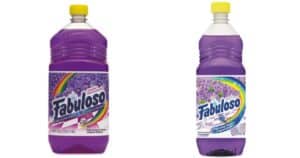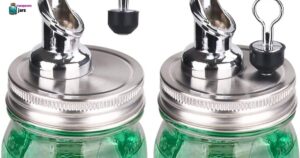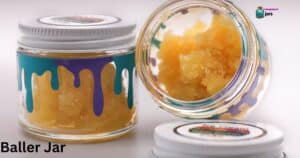Making a carpenter bee trap with a mason jar is simple. You need a mason jar, a wooden block, and a drill. Drill holes in the block and attach it to the jar. Bees will enter the holes and get trapped inside. It’s an effective, eco-friendly solution to control carpenter bee infestations.
Carpenter bees can be a nuisance, but making a trap with a mason jar is simple. Start by drilling a hole in the jar lid. Fill the jar with sweet liquid, like sugar water or soda. Bees will fly in, but can’t get out. Place it near their nests for an effective solution.
To make a carpenter bee trap with a mason jar, first, obtain a glass jar and a piece of wood. Drill a hole in the wood, making sure it’s the same size as the carpenter bee’s entry hole. Attach the wood to the jar, and place sweet bait inside. Bees will enter the jar but can’t escape, helping control them.
Gather Your Materials
Gathering the materials is the first step in making your carpenter bee trap. For the main component, you’ll need a mason jar, which is easy to find at most stores. Be sure to also have some bait ready, such as sweet syrup or a mixture of sugar and water, as this will attract carpenter bees to your trap.
It is important to take safety precautions when collecting your material. Wear protective gear such as safety glasses and gloves to avoid accidents when working with tools. When you’ve gathered everything you need, you’ll be ready to make a carpenter bee trap.
Choosing the Right Mason Jar
Choosing the right mason jar is important for your carpenter bee trap. First, consider the jar’s size and shape. A larger jar can catch more bees, while a shorter, wider one might fit better in tight spaces.
Decide whether you want to Hang Mason Jars or use another method for your carpenter bee trap. Clear jars let you see the trapped bees, while opaque ones keep them hidden. Lastly, pick a lid that’s easy to remove for bait refills and cleaning. These choices will help make your carpenter bee trap effective.
Preparing the Mason Jar
| Step | Description |
| 1. Cleaning | Thoroughly clean the mason jar, removing any residues or impurities. |
| 2. Sanitizing | Sanitize the jar with a mild bleach solution to ensure it’s free of bacteria and odors. Rinse it well afterward. |
| 3. Drilling Holes | Use a drill to make entry holes near the top of the jar’s lid. These holes should be large enough for bees to enter but not escape. |
| 4. Adding Bait | Place your chosen bait, whether natural or homemade, inside the jar to attract carpenter bees. Ensure it’s easily accessible through the entry holes. |
Selecting the Perfect Bait
Selecting the perfect bait for your carpenter bee trap is essential. The right bait will attract these bees effectively. You can use natural lures like wood or sap, or create your own bait with simple ingredients.
Homemade baits can be made from things like sugar water, honey, or vinegar. A good tip is to experiment with different bait options to see which one works best in your specific area. Remember, the right bait will make your trap more enticing to carpenter bees, increasing its effectiveness.
Setting Up Your Carpenter Bee Trap

Setting up your carpenter bee trap is a simple process. Find a sunny spot in your yard, preferably near carpenter bee activity. Hang or mount the mason jar trap, ensuring it’s stable and secure. Then, let the trap do its work.
Remember to periodically check the trap, especially during peak bee season. Replace the bait if it dries out or loses effectiveness. With a well-placed and maintained carpenter bee trap, you can enjoy a bee-free outdoor space without much effort.
Maintenance and Monitoring
Regularly checking and maintaining your carpenter bee trap is essential to keep it effective. Make it a routine to inspect the trap every few days, especially during the bee activity season. Look for any trapped bees inside the jar, and ensure the bait is still fresh and appealing.
Cleaning the mason jar trap is also crucial. Remove any dead bees and debris, wash the jar, and replace the bait as needed. This simple maintenance ensures that your trap continues to attract and capture carpenter bees, keeping your outdoor spaces bee-free.
Tips and Tricks
Tips and tricks can make your carpenter bee trap more effective. Simple enhancements like using sweet-smelling bait or placing traps near bee nests can increase their success. If you have multiple traps, try spacing them out for better coverage. Regularly inspect and clean the traps to maintain their efficiency. These small adjustments can lead to better results in catching carpenter bees.
FAQ s
How do I make a carpenter bee trap with a mason jar?
To make a carpenter bee trap with a mason jar, simply drill a hole in the jar lid, attach a wooden block with a hole in the center beneath it, and hang the jar near carpenter bee activity.
What bait should I use for the carpenter bee trap?
Fill the mason jar with a sweet liquid, such as sugar water or soda, to attract carpenter bees. Add a drop of dish soap to prevent them from escaping.
Where should I place the mason jar carpenter bee trap?
Hang the trap near carpenter bee nests, entry holes, or areas of activity, like eaves, decks, or wooden structures for effective trapping.
Conclusion
Making a carpenter bee trap with a mason jar is a simple and effective way to deal with these pesky insects. By following the easy steps outlined in this guide, you can create a trap that lures the bees in and keeps your property safe from their damage.
Not only is this method budget-friendly, but it’s also eco-friendly, as it doesn’t involve harmful chemicals. So, if you’re looking for a natural and efficient way to protect your wooden structures from carpenter bees, give this DIY trap a try – it’s a practical solution for a common problem.











